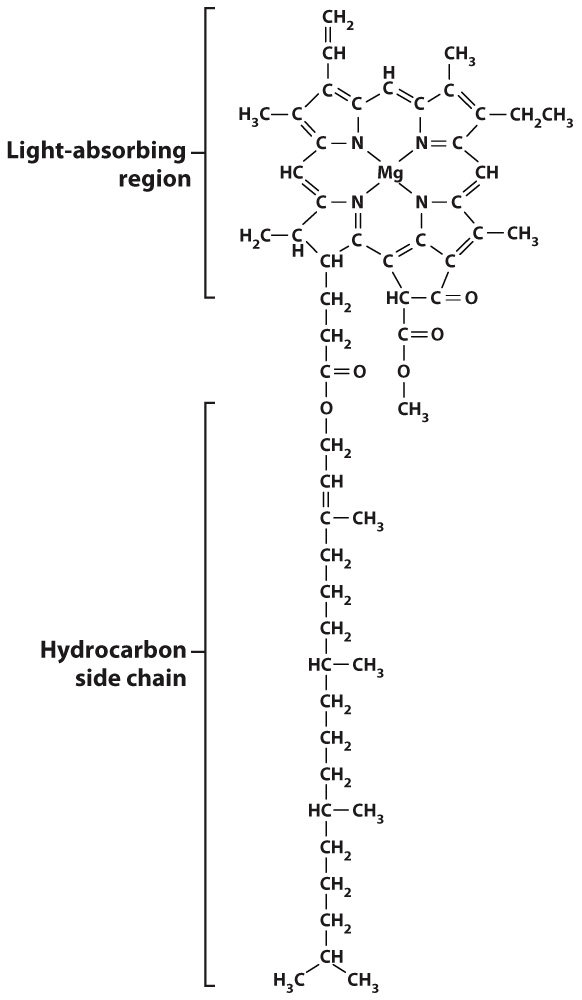Chlorophyll is the major entry point for light energy in photosynthesis.
To understand how light energy is captured and stored by photosynthesis, we need to know a little about light. The sun, like all stars, produces a broad spectrum of electromagnetic radiation ranging from gamma rays to radio waves. Each point along the electromagnetic spectrum has a different energy level and a corresponding wavelength. Visible light is the portion of the electromagnetic spectrum apparent to our eyes, and it includes the range of wavelengths used in photosynthesis. The wavelengths of visible light range from 400 nm to 700 nm. Approximately 40% of the sun’s energy that reaches Earth’s surface is in this range.


Pigments are molecules that absorb some wavelengths of visible light (Fig. 8.8). Pigments look colored because they reflect light enriched in the wavelengths that they do not absorb. Chlorophyll is the major photosynthetic pigment; it appears green because it is poor at absorbing green wavelengths. The chlorophyll molecule consists of a large, light-
Chlorophyll molecules are bound by their tail region to integral membrane proteins in the thylakoid membrane. These protein–
Photosystems contain pigments other than chlorophyll, called accessory pigments. The most notable are the orange-